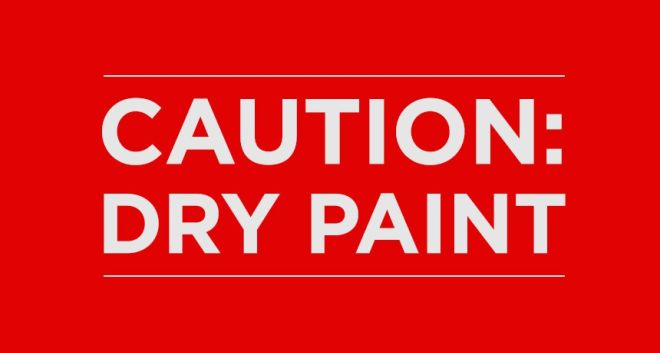Is my paint dry?

We often get asked how long will it take for the paint to dry. This article explains the difference between paint "DRYING" and paint "CURING"
Bored Watching Paint Dry? Try Watching it Cure!
Molly Keesling - Office Manager at Millennium Mold & Tool
In today's fast-paced society, time is one of our most precious assets. Busy schedules and an increased reliance on technology have created expectations for immediate results. Because of this, one of the most common questions paint & coatings professionals hear is...
“How long until it's dry?”
Unfortunately, there are so many factors that affect dry time - plus a difference between “dry” and “cured” - that this question can be very difficult to answer directly. The following paragraphs explain the difference between dry coatings and cured coatings, as well as some influencing factors that can shorten or lengthen dry and cure times.
Dry vs. Cured
A coating is considered dry when it is no longer wet or tacky to the touch, when the majority of the paint's base (solvent) has evaporated. A coating can be dry to the touch in as little as an hour or two. Dry paint is still susceptible to damage such as scratching, scuffing, or peeling if it is exposed to traffic before it is fully cured. A coating is considered cured when it has dried completely. This means the paint has reached its peak hardness and all of the solvents have evaporated. Most paints and coatings take days or even weeks to become fully cured.
Influencing Factors
- Surface - Porous or absorbent surfaces will take longer to dry/cure, less porous surfaces will take less time to dry/cure
- Viscosity - Thick, viscous paints tend to take longer to dry and cure than paints that are thinner.
- Sheen - Typically, the glossier the finish, the longer a coating takes to dry/cure.
- Type of coating - Different types of paints have different dry and cure times.
- Colour - Interestingly, colour does have an effect on the dry/cure time of paints and coatings: darker colours take longer to dry than lighter shades.
- Number of coats - Applying additional coats will lengthen drying and curing times.
- Air flow - A well-ventilated area will shorten the dry/cure time of a coating, whereas poor air flow will lengthen dry and cure times.
- Humidity - High humidity will result in prolonged drying and curing times and low humidity will result in a shorter wait.
- Temperature - Coatings take less time to dry/cure in warm temperatures than they do in colder temps.
Drying Methods
For as long as there have been protective coatings, manufacturers and users have been determined to shorten dry and cure times. This is demonstrated with “quick-dry” product lines. Additional methods for reducing dry times include convection ovens, infrared heat and industrial dehumidification systems.
Convection ovens utilize high temperatures in conjunction with air flow to quickly evaporate solvents for a faster cure. Infrared ovens use radiation to heat the coating from the inside out very rapidly to prompt a quick cure. Dehumidification systems remove moisture from the air surrounding a coated surface to speed up the release of solvents.
As new coatings technology continues to emerge, methods of shortening dry and cure times will become increasingly effective, satisfying the consumer want for quick, positive results.



